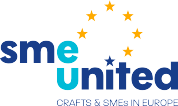Find the pdf version here.

Harmonisation of European lifts standards: a rough process
Directive 2014/33/EU on the harmonisation of the laws of the Member States relating to lifts and safety components for lifts (hereafter the New Lift Directive) applies since 20 April 2016. Directives and Regulations, falling under the ‘New Legislative Framework’ and based on the New Approach, set out essential requirements that the products covered by the Directives and Regulations need to meet in relation to safety and other aspects of public interest. The European Commission issues standardisation requests to the European Standardisation Organisations (CEN, CENELEC and ETSI), which are responsible for preparing technical standards and specifications that facilitate compliance with these essential requirements. The Commission Implementing Decision C(2016) of 21 September 2016 (hereafter Mandate /549) on a standardisation request to CEN regarding lifts and safety components for lifts in support of the new Lifts Directive was approved by the European Commission on 21 September 2016 and accepted by CEN on 17 October 2016. In standardisation request M/549, the European Commission asked CEN to revise the existing harmonised standard for lifts in order to make them fully compatible with Directive 2014/33/EU and compliant with the requirements set out in Annex I of M/549. The deadline for the adoption of the revised standards was 18 months from the date of the notification of the mandate i.e. 22 September 2016. The deadline of 18 months was considered by CEN a very tight deadline for providing fully revised standards. Therefore CEN chose to limit the scope of the requested revision work by redrafting the informative Annex ZA to the standard that should indicate the correspondence between the standard’s clauses and the essential requirements of Annexes I of the New Lift Directive and of the Machinery Directive 2006/42/EC if applicable to lifts. CEN also decided to add dated normative references to the standards and to update the Foreword, but no technical changes were introduced. During 2018, CEN approved the new edition of six lifts standards: EN 81-21, EN 81-28, EN 81-58, EN 81-70, EN 81-71, and EN 81-77. The new editions of these standards were offered to the European Commission for harmonisation. The Commission evaluated the standards and concluded that they did not comply with the standardisation request and with some of the EU rules. For the execution of standardisation requests (see also ‘Vademecum on European standardisation in support of Union legislation and policies’). Consequently, these standards were not published in the Official Journal of the European Union and will not be harmonised in their current version. In the meeting of the Lifts Working Group held in Brussels on 1 February 2019, the European Commission explained that the main standard for lifts i.e. EN 81-20, should have been revised first, and that it is not possible for the European Commission to harmonise standards that make normative reference to other standards under revision (see also ‘Vademecum on European standardisation in support of Union legislation and policies’). The Court of Justice of the European Union indirectly called on the European Commission for a more accurate monitoring of harmonised standards, in particular in the ‘James Elliott case’ (Case C-613/14). Through this judgement, the Court clarified the role and legal status of harmonised standards by concluding that harmonised standards 'form part of EU law', even though they are developed by independent private organisations and their use remains voluntary. This judgment prompted the European Commission to review thoroughly its procedures related to the assessment of harmonised standards, making clear that it aims at fulfilling its obligation in a manner that is as swift and efficient as possible. The competent services of DG GROW reassured SBS that there would not be any immediate negative impact on SMEs resulting from the lack of harmonisation of the above-mentioned standards. Even if the previous editions of these standards were withdrawn by CEN, they would still provide presumption of conformity with Directive 2014/33/UE because their references were published on the Official Journal of the European Union and were not withdrawn by the Commission. The rejection of the new edition of the standards does not affect the harmonisation of the previous editions that continue to provide their legal effect (presumption of conformity). SBS’ representatives in CEN TC/10 have been asking CEN, since early December 2017, for a rapid revision of the main standard for lifts i.e. EN 81-20, in order for it to fully comply with the essential requirements of the Lifts and Machinery Directives, as clearly specified in the requirements set out in mandate M/549, including those dealing with the fair competition in the internal market. The current version of EN 81-20 still unduly restricts access to relevant maintenance and diagnostic data, related interfaces and tools needed during the use phase of lifts. If CEN TC/10 does not complete the revision work in an appropriate manner, there is once again a risk that the European Commission will reject EN 81-20 as a harmonised standard resulting in the refusal of all other lifts standards, with major consequences for the whole lifts sector.



